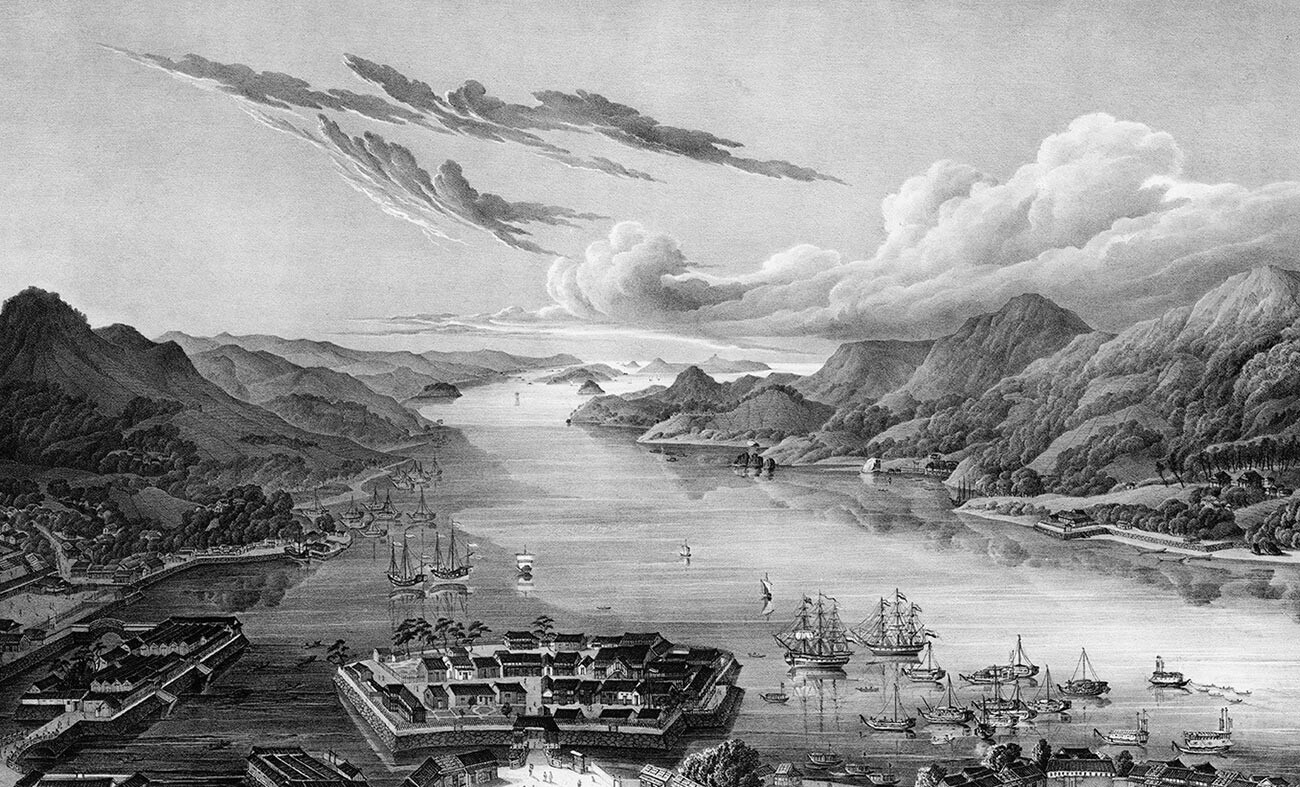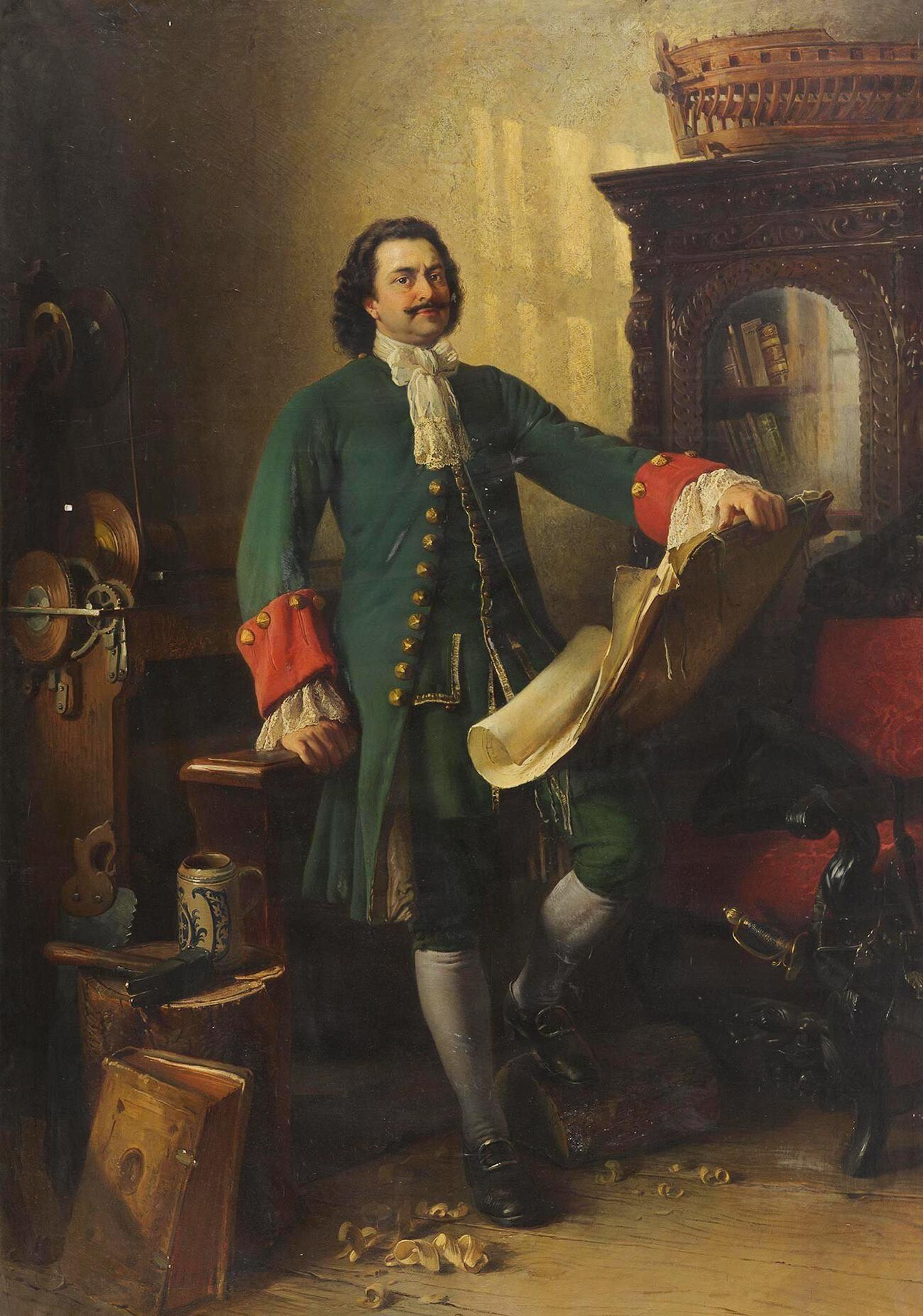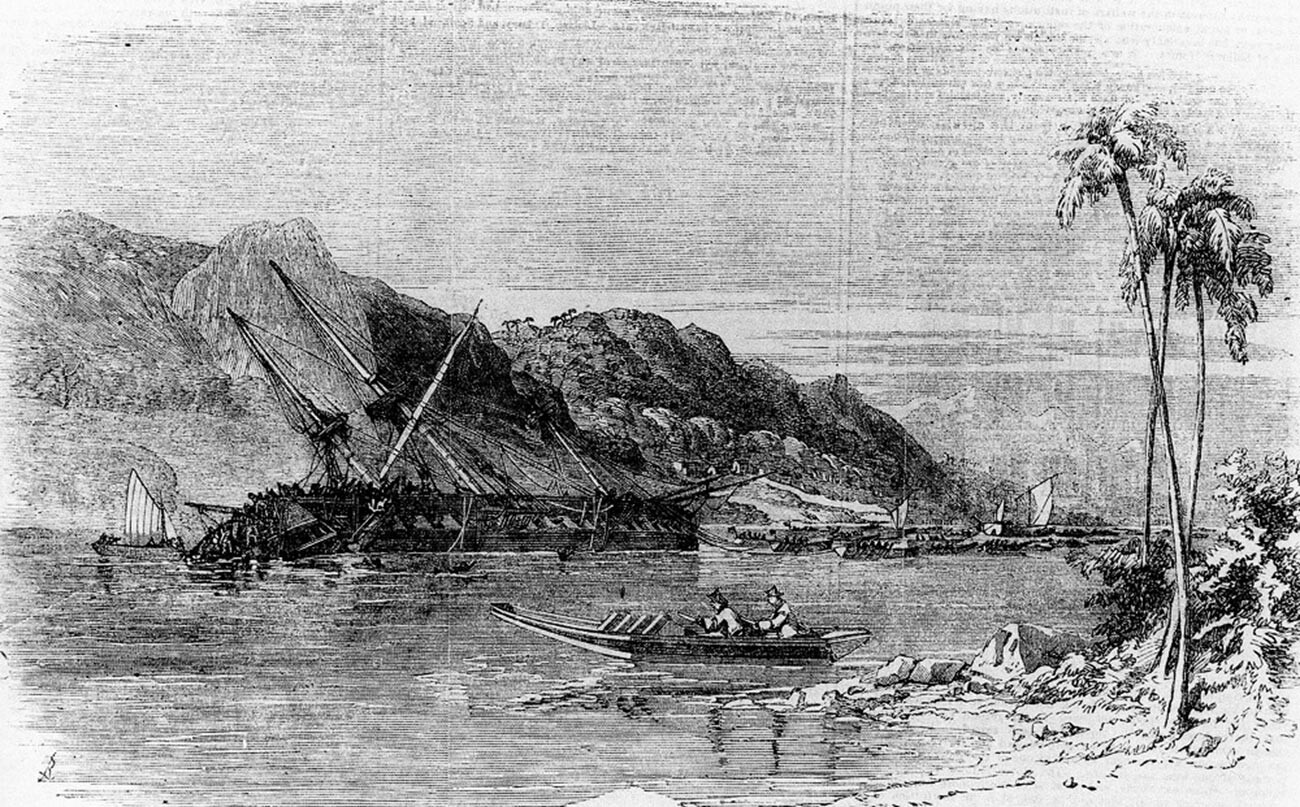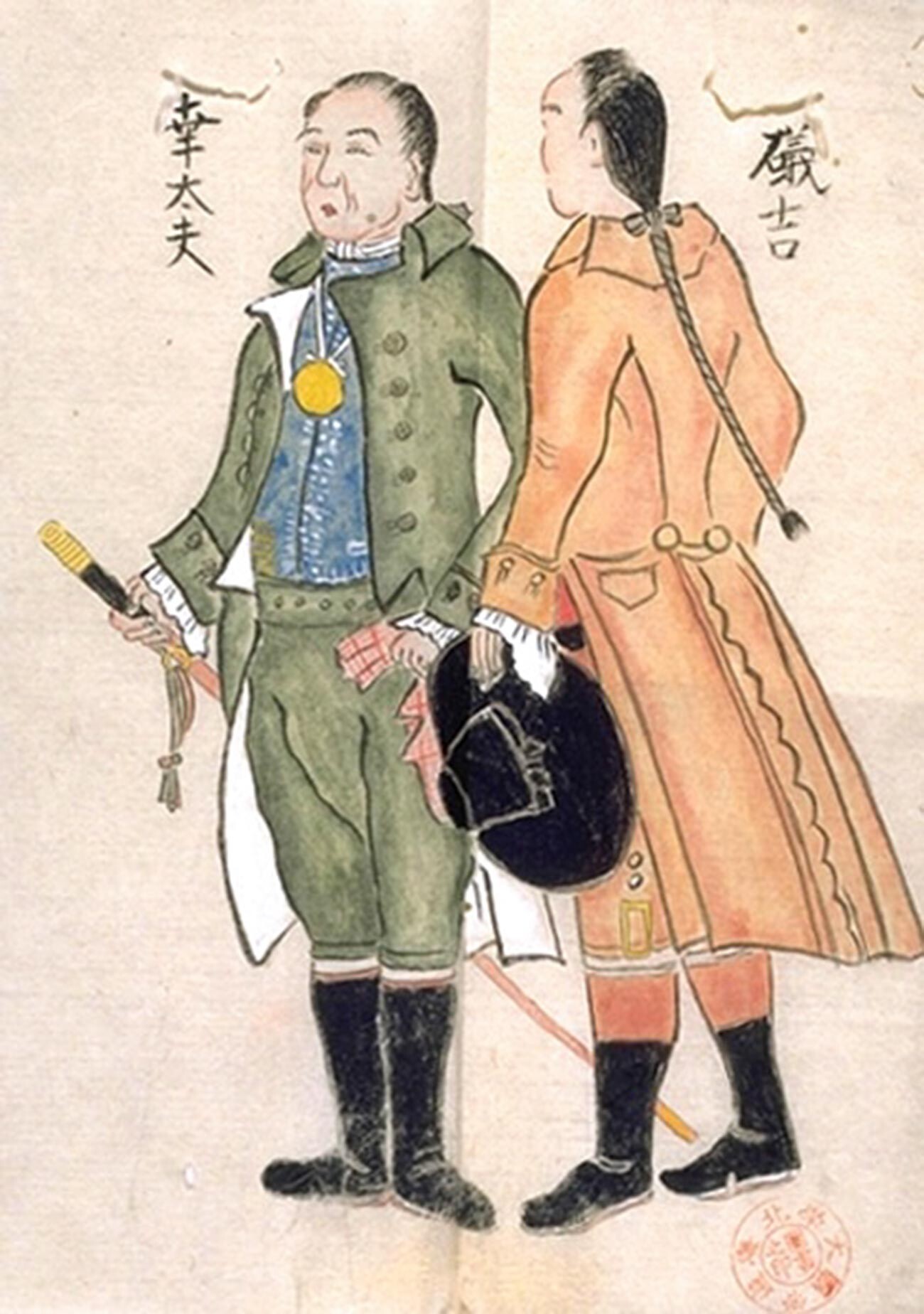
Before the 17th century, Russians knew next to nothing about Japan. They possessed only scant scraps of information they received from Europeans. They pictured that distant Asian country as a rich fairytale land, a “golden island” where “nature’s hard-hearted people” lived (Russians had heard of Japan’s persecution of Christians).
By the middle of the 17th century, the Cossack detachments sent by the tsar to explore Siberia had reached the Kamchatka Peninsula and stepped on the Pacific coast. It was there that the two civilisations met.
By that time, thanks to the efforts of the Tokugawa shoguns, Japan had already closed itself off from the rest of the world, giving limited access only to Chinese and Dutch traders. Ships destined for overseas voyages were seized and destroyed and only small merchant ships operated in coastal waters.

View on Dejima in Nagasaki Bay.
Public DomainHowever, more than once, a storm or hurricane swept these fragile vessels toward Kamchatka and the Japanese sailors who survived the subsequent shipwrecks made it ashore, which the Russian monarchs now considered theirs.
One such survivor was Osaka merchant Dembei Tatekawa. In 1697, he was discovered and protected from local Kamchadal (Itelmen) tribes by the Cossacks of pioneer Vladimir Atlasov’s detachment.
“And when Volodimer Otlasov with Cossacks came to the Kamchadal land - a Japanese man later described his misfortunes in the third person - and he, Denbei, seeing that their natures were clean, came to them, so that they would not leave him because of hunger. And Volodimir and his fellows took him, Denbei, to themselves, but they did not give him to Kamchadal natives and took him to the Siberian land.”
Tatekawa, who was soon sent from Siberia to Moscow, was in fact the first Japanese person on record to visit Russia. There are reports that, as early as 1600, a baptized Catholic missionary named Nicholas arrived in Moscow and perished during the political and economic crisis that soon broke out, known as the Time of Troubles. However, the version that he was Japanese is not supported by the facts.

Peter the Great in His Studio.
Konstantin MakovskyHaving learnt Russian, Dembei met the Tsar Peter I in 1702, to whom he gave detailed accounts of the life and manners of his country. He would have been happy to return home to his wife and two children, but the Shogunate’s rigid policy of self-isolation made this impossible. Having become Gavriil Bogdanov in the local manner, the Japanese merchant remained in the Russian state, where he began to teach his language at the behest of the sovereign.
In 1706, a Japanese language school was established in St. Petersburg, which later moved to Irkutsk. It was staffed by the same tragic way Dembei himself had come to Russia - as a result of the shipwrecks of Japanese ships off the Kamchatka coast.
Thus, a certain Sanimu became the assistant and successor to the first Japanese merchant turned scolar in Russia. In 1736, rescued Japanese sailors Soza and Gonza arrived in St. Petersburg and became Kuzma Shultz and Damian Pomortsev after embracing Orthodoxy. The Senate ordered to “immediately find the Japanese ship they had been on, including the books in that language, which Russian people took and who has those books and if any books or letters in Japanese are found, they shall be sent to the Senate immediately”.

Honza compiled a loose version of the first Russian-Japanese dictionary - the small ‘New Slovene-Japanese Lexicon’. A Russian-Japanese “Lexicon” containing over a thousand words and phrases in Russian and Hiragana alphabet, compiled by Andrey Tatarinov, a graduate of the school, was then published in 1782.
Peter I was very interested in the information he received from Dembei. Although, at the time, he was wholly preoccupied with the Northern War against the Swedes, the conquest of the Baltic and the “window to Europe” for Russia, the Asian direction seemed equally important.
The tsar understood that establishing political and economic contacts with Japan would substantially help in developing the Far East. It would be easier for Russian settlements there to receive everything they needed from the neighboring ‘Land of the Rising Sun’, than from the distant center.

Japanese merchants who survived the shipwrecks and spent 10 years in Russia.
Public DomainDuring Peter the Great’s lifetime, Russians established themselves on the Kuril Islands, which became a quasi stepping stone to Japan. However, direct contacts began only later, during the reign of Empress Anna Ioannovna.
In 1739, the ships of Dane Martin Spanberg and Englishman William Walton, both in Russian service, reached Japanese shores. Spanberg sailed into the harbor of Kyushu Island and received a Japanese delegation on board with gifts.
Walton, for his part, made his way to Honshu Island and ventured ashore, where he spent some time socializing with the locals.
The sailors were extremely fortunate, as the Japanese were not keen on uninvited guests and such visits could have been disastrous. Later, Russian ships off the coast of the ‘Land of the Rising Sun’ were met by detachments of armed soldiers and clusters of patrol boats, preventing them from disembarking and forcing them to take to the open sea.

Japanese delegation at the coronation of Nicholas II.
Public DomainAnother attempt to establish relations with Japan was made by Empress Catherine II in 1792. The parties even held talks on the island of Hokkaido, but no serious follow-up ensued.
In 1811, the Japanese seized the Russian sloop ‘Diana’, which was conducting a hydrographic survey of the Kuril Islands. The two powers, which even had no diplomatic relations, found themselves on the brink of war. However, the conflict was settled and the Russian sailors returned home after two years of captivity.
In the 1850s, the U.S. brought Japan out of its isolation almost by force. The country, which opened up to the world, embarked on a path of accelerated modernisation and large-scale rearmament. Russia not only gained an important economic partner, but also a serious geopolitical rival in the Far East, of which it was convinced at the beginning of the 20th century.
Dear readers,
Our website and social media accounts are under threat of being restricted or banned, due to the current circumstances. So, to keep up with our latest content, simply do the following:
If using any of Russia Beyond's content, partly or in full, always provide an active hyperlink to the original material.
Subscribe
to our newsletter!
Get the week's best stories straight to your inbox